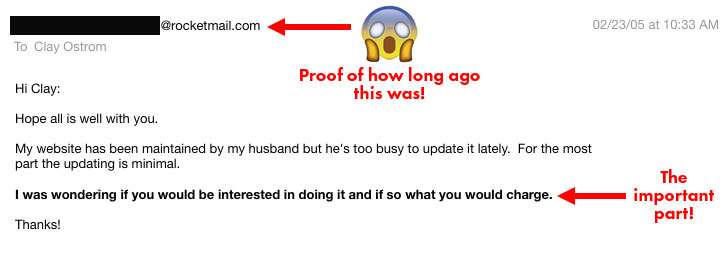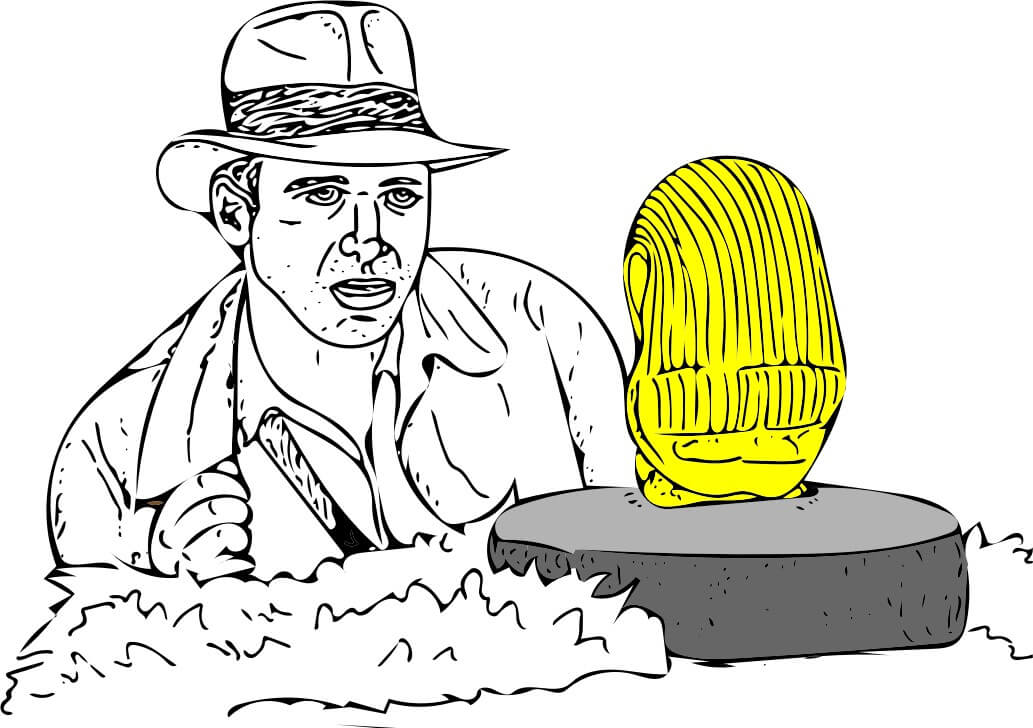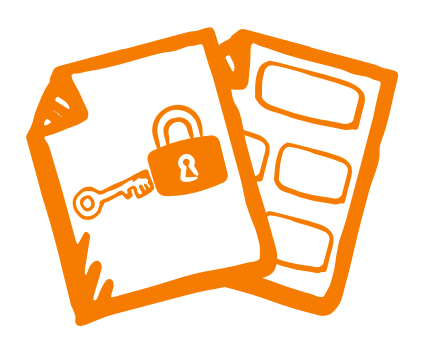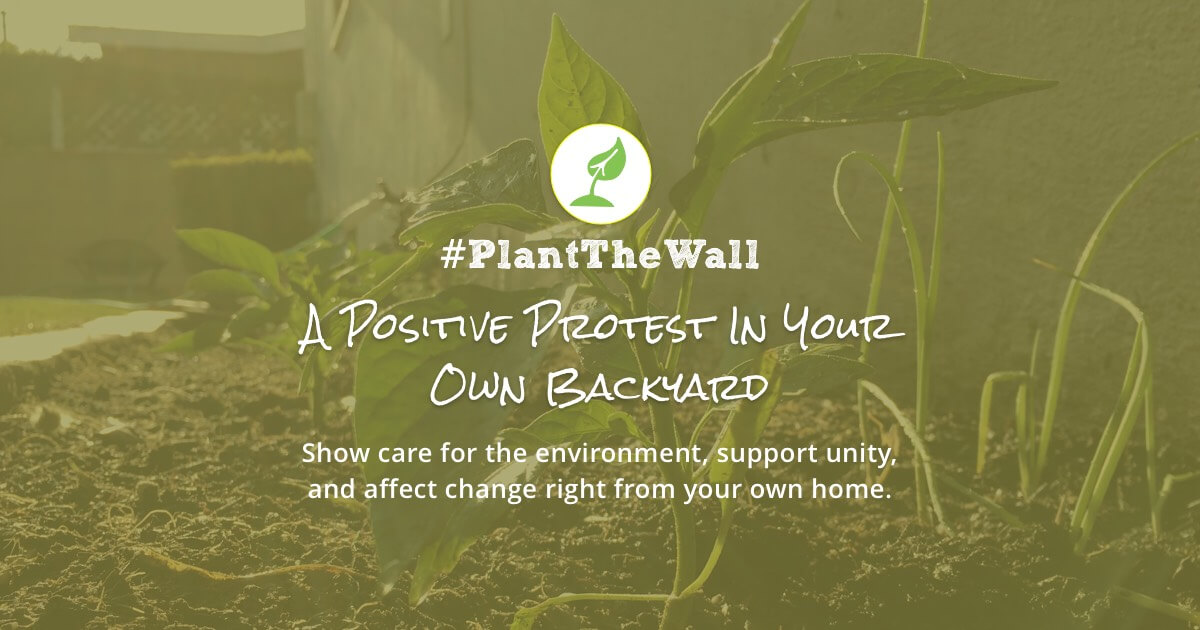Sometimes, it can be a struggle to get motivated, find inspiration, and connect with the deeper purpose that can push you forward into bringing your business idea to life.
In my experience, the lure of just a money-making opportunity (alone) is never enough to help me get motivated—at least not the lasting kind of motivation that can sustain the growth of a side project beyond just the idea phase.
When the going gets rough, and you experience your first setback… get your first rejection… if you’re not motivated by something greater than just money or fame, the chances are high that you’ll give up pretty damn quickly.
Starting (and growing) your side hustle often takes a lot of time, effort, and careful sacrifices throughout all areas of your life.
In order to pull it off, you’ll need to get motivated—for the right reasons.
Here to talk about his own experiences with getting motivated, finding inspiration and starting his side hustle, is my friend and reader, Clay Ostrom, a business strategist and co-founder at Map and Fire.
Here’s Clay…
Now, I’m going to turn this guest post about how to get motivated and find inspiration over to Clay!
…
Here’s Clay:
About 12 years ago I had a regular, full-time job as a web designer and developer.
I was clocking in and out each day, doing good work, and making decent money.
Then one day I got an email from a friend.
(This is the real email which I found under many years of digital rubble)
I had never sought out any kind of freelance work before, but I was intrigued.
We exchanged a couple more messages around what sort of help she needed, and finally agreed on doing a full website redesign for $1000.
And just like that, I had my first side hustle.
As the great Wayne Coyne of the The Flaming Lips once put it: Suddenly Everything Has Changed.
(The Flaming Lips capturing what it feels like to find your first side hustle. Credit: Rolling Stone)
But What Was Really Going on Inside My Head?
On the surface, that story is very straight forward. A friend asks another friend to help them with a problem and offers to pay for that help. Happens all the time.
Digging down a little deeper, I think it highlights some really interesting and important concepts around why someone would want to start a side hustle, and the factors that would push you to act on those feelings.
What made me so eager to take the opportunity? Sure, there was the promise of some extra cash, but I was already making a good salary at the time. I was certainly making way more than I could get from this side project.
So, to answer the question of why I was excited to take the project, let’s look at some of the things I considered:
- I get a chance to control the entire flow of the project (i.e. more ownership of the work)
- I get to shape and execute the website creative and development (i.e. grow my skillset)
- I get to do things the way I think they should be done (i.e. express my expertise)
Each of those represents a feeling I was having. Collectively they represented a type of energy I had inside of me that I was probably aware of, but hadn’t fully recognized until then.
I was early in my career and still learning a lot from my job, so that internal energy — aka. my activation energy — was just starting to build. I wasn’t actively seeking out another job, but I wasn’t totally content either.
Then along came an opportunity — a catalyst — that could lower the threshold for me to act on those feelings and make them a reality.
Together we see two fundamental factors that would lead you to start your own side hustle.
- The internal “activation energy” required for you to start a side hustle
- The external “catalysts” that could accelerate your desire to make that leap
How can we break these factors apart in more detail so that they’re easier to spot when they pop up in our lives?
What is “Activation Energy”?
An interesting way to frame the challenge of starting your side hustle is to borrow a concept from chemistry called “activation energy”.
In chemistry terms, activation energy is the minimum energy required to initiate a reaction.
Shane Parrish recently wrote an excellent article on Farnam Street that crystallized this concept for me and inspired me to explore this topic more deeply. In the article he describes the chemistry fundamentals of activation energy and then how the concept can be used as a mental model (to help get motivation) in our day-to-day lives.
Shane references several interesting examples including the activation energy required for a student to start writing an essay, and the activation energy needed for someone to leave a long term relationship.
As you can imagine, the size of the “task” you’re initiating has a huge impact on the level of activation energy required to get started.
How does this translate into evaluating when you’ll start your own side hustle?
What Helps You Get Motivated and Impacts Your Activation Energy Level Today?
When considering whether you’re ready to start a side hustle, you have to get motivated. Motivational quotes can only take you so far. Start by thinking about what change you’re hoping to make in your current situation and why. What combination of feelings or needs will get you to your point of activation?
Here are some key factors that could contribute to helping you get motivated and boost your activation energy:
1. Ownership of Your Path.
This could mean the specific ownership of your own business but then more generally ownership of your overall career path. However you choose to think about it, you’ll have an opportunity to increase your happiness by doing something entrepreneurial.
Ownership also relates to the idea of having autonomy in your work. In a recent study, where employees were given the opportunity for a promotion, those that were offered more autonomy and less influence selected it 62% of the time, versus 26% for those who were offered more influence over subordinates but less autonomy.
Self-determination is a fundamental human desire and starting a side hustle is a great way to satisfy that need.
Questions to Consider:
- Do you feel like you’re making deliberate choices about your career path?
- Or do you just take opportunities that come your way?
- Do you have much say about your responsibilities at work or is it always dictated by someone else?
2. Grow Your Skillset.
There are both personal and practical reasons to seek out growth in your career.
On a personal level, you may be looking for new ways to tap into your interests or a particular skillset. On a practical level, you may want to keep up with trends in your industry, build your strengths there or branch out into an industry with more opportunities.
If you’re seeking growth, you can know that you’re not alone. In a recent Gallup poll, 87% of millennials rated “professional development and career growth” as “very important” to them.
Unfortunately, when you work for someone else it’s easy to get confined by their very specific set of responsibilities. Seeking out new challenges through a side hustle isn’t just a fun challenge, it’s a critical piece of developing a career path where you have real options.
Questions to Consider:
- Have you been doing the same type of work without much variation for a long time?
- Do you see things you could be doing in your job that interest you more?
- Do you have untapped skills or interests that you don’t think are used effectively?
3. Express or Deepen Your Expertise.
Demonstrating expertise in your work is an amazing way to build confidence and deepen satisfaction in what you do. People want to feel useful and be recognized for their skills. In a lot of cases, the responsibilities of your job may not fully tap into your level of expertise. A side hustle on the other hand, could free you up to express your knowledge in a more complete or meaningful way.
Cal Newport’s book “So Good They Can’t Ignore You” digs into the idea that happiness in your career doesn’t come from finding a job you’re passionate about, but by becoming great at something valuable.
A side hustle can become a fantastic way to deepen expertise in something you already do well while providing more opportunity to express your full range of capabilities.
Questions to Consider:
- Do you feel like your desire to do great work is undervalued?
- Does your job have a clear cap on how far they’ll push you to get better?
- Are there limited options for learning more from teammates?
4. Find Purpose in Your Work.
One factor that’s very easy to overlook in your work is purpose.
Our career paths are often influenced or even formed through circumstance or opportunities that pop up in our lives. There’s nothing wrong with that, but it can lead you down a path without a strong connection between what you do and what you value.
In a study by Net Impact, they saw that 72% of college students rated “having a job with impact on causes important to me” as “very important”. In that same study, 59% of millennials and 49% of GenXers also rated making an impact on important causes as “very important”.
In addition to any generational differences, I think this also highlights how as we get further along in our careers we can lose sight of the connection between our values and our work.
Even if the realities of life have stripped away some of that idealism from college, it’s never too late to pause and think about what’s truly important to you. And once again, a side hustle is a perfect place to explore an opportunity that may be more aligned with accomplishing that.
If you want help defining your purpose, I wrote an article with some simple exercises to get you started.
Questions to Consider:
- Do you wonder why you’re even doing what you’re doing?
- Is there a lack of connection or misalignment between your core beliefs and what you do?
- Are you just clocking in and out every day?
- Do you feel preoccupied with other ideas?
5. Make More Money.
Making more money is an important driver for helping a lot of people get motivated to start their own business.
There’s no doubt that by starting your own side hustle you could eventually make more than what you’ll get working for someone else. But be cautious about making decisions just around the money.
Think hard about the other factors that would motivate you and impact your activation energy (ownership, growth, purpose, etc.) before you jump to money. If you focus your energy on a path that’s strictly a way to make money, there’s a good chance your personal investment and interest will dwindle over time.
If your current job is unfulfilling and mainly a paycheck, the last thing you’ll want to do is replace that with another unsatisfying paycheck. There are so many business opportunities out there, take the chance to figure out if there’s a side hustle that connects with you on a deeper level so that it can sustain over time.
“Money should just be a side effect of providing a service you love…” – James Altucher @jaltucher
6. Gain Freedom Over Your Time.
Having more freedom to do the things you want to do, when you want to do them, is incredibly powerful and is a strong driver in helping many entrepreneurs get motivated.
Starting your own side hustle can get you on the path to achieving those things.
But it’s important to distinguish between “freedom” and “free time”
While working for yourself does provide a level of freedom, it doesn’t necessarily translate into having more free time to simply do whatever you want. At least not at first.
Starting up something new takes a lot of activation energy to get started, and then a lot of sustained energy to keep going. Is that sacrifice of energy worth it? I would absolutely say, yes! But you should go in with a sense of the trade offs that you’ll need to get there.
Like the motivator of “making more money”, it’s good to think about some of the deeper personal benefits of starting a side hustle to make sure you’re aligned on those levels. Those are the things that will sustain you on your path to having more freedom.
…
Now that you have a sense of the different motivating factors that would contribute to your your activation energy, let’s look at some catalysts that could accelerate your desire to get started!
What are Catalysts and How Do They Speed Things Up?
Going back to the world of science for a second, a catalyst is something that provides a faster path to activation by lowering the level of energy required.
To pull another example from Shane’s article, lighting a log with a match isn’t an effective way to start a fire. But if you add some paper into the mix, now you have a path that lowers the level of activation energy required. The match can easily set the paper on fire, which in turn accomplishes the larger goal of starting a sustainable fire with the log.
Thinking back to my story at the start of this article, you can see how this translates into a mental model for side hustles.
In my story, the “log” was the larger opportunity of having a sustainable side hustle as a freelance web designer. It was big and had lots of potential but it would take quite a bit of activation energy to start “burning”.
The “match” was the combination of factors that could ignite the log. Unfortunately, my “match” of being a little dissatisfied and unfulfilled with my full time gig wasn’t powerful enough to light the log on its own.
But then the catalyst of a friend dropping a paid freelance opportunity in my lap became the “paper” that my match could very easily light and start burning. This in turn, ignited the log and started a real fire of me wanting to invest time in this side hustle.
Starting the fire for your side hustle—whether it’s freelancing or otherwise—is always going to be a little daunting, so what are some catalysts that might make it easier to get started?
Turn on Your Catalyst Radar!
Once you start looking for potential catalysts to jumpstart your side hustle, you’ll quickly see that they’re all around you.
Because catalysts are so common, it’s good to think about the different forms they take so you can find some that align what you actually want for your life.
It’s important to note that there doesn’t have to be just one catalyst to help you get started. In the experiences I describe below there were almost always multiple catalysts at play.
Catalysts can be additive in that way. One catalyst may lower your activation energy level to a certain degree, but multiple catalysts may transform getting started from a tough call into a total no-brainer.
The following are some potential side hustle catalysts to put on your radar.
7. Market Opportunity (aka. The Right Problem).
This is exactly what drove my story at the top of this article.
The market opportunity couldn’t have been more clear because it literally arrived in my inbox. In that example, The “market”, was someone telling me, “I have a problem you can help with and I’m willing to pay you for that help.”
My friend was a real estate agent at the time and was very connected in that space, so once I completed her project the market opportunity quickly expanded to her network. It turned out lots of folks had similar problems managing their websites and I was able to repurpose technology I built for her multiple times. This gave me stability to then expand out to other verticals.
The market may not always be beating down your door, but you’ll always want to assess the viability of the market to determine the potential of your side hustle.
Another way to think about market opportunity is to ask “What’s the problem I’m addressing, and how many people does it affect?”
Focus on falling in love with that problem and really explore its potential before you jump to solutions.
If you’re trying to nail down the problem you’re solving, who it serves, and why they’ll care about it, we have free Product / Market Fit worksheets to help answer those questions.
Questions to Consider:
- Is this market suffering from a real problem that needs to be solved?
- How big is that market?
- Do I have connections or resources that will help me tap into that market?
8. A Great Idea (aka. The Right Solution).
Lots of side hustles and businesses get started with a great idea.
It’s exciting to feel like you’ve created something that’s new and that could be of real use to someone.
But to restate what I wrote above, while ideas are important, you need the right problem and market in order for your great idea to be viable.
I co-founded a startup several years ago that started with the idea of creating a marketplace to help independent providers of health and wellness services (massages, yoga, personal training, etc) to market themselves and provide deals to connect with more clients.
The idea was solid and we were all excited to work on it. However, we really struggled to gain traction quickly enough to sustain the business. After a couple years of focused effort the business eventually dissolved. In retrospect, we probably fell in love a little too hard with our idea before fully validating the needs of our market.
The point here is that a great idea can absolutely serve as a catalyst for pushing you to start a side hustle, but ideas alone don’t make a successful business.
Before that idea-catalyst totally lights your fire, really dig in and validate the problem it’s addressing.
Questions to Consider:
- What problem does this idea/solution address?
- What sort of customers really need this type of solution?
- What’s unique about this solution compared to other existing solutions in the space?
- Am I well suited to execute this solution?
9. Social Factors.
I started a little side hustle recently that served a very different purpose for me. With all the political turmoil going on right now in our country I found myself seeking some way to make even a small impact on the greater community.
I wasn’t looking to make money with it or find a new career, I simply wanted to feel like I was taking some action to make my voice heard.
I decided to focus on raising environmental awareness by encouraging people to plant gardens and then share photos of their work online. My hypothesis being that getting people more involved with the environment on a personal level will raise their level of interest and commitment to the bigger picture needs.
It’s a lofty goal and a slow process, but it’s been very personally satisfying to create something with a very separate goal from my normal day job and see it gain little bits of traction. Over the last few months, I’ve met lots of new folks and gotten them to tag more than 500 photos on Instagram with the hashtag I created #plantthewall. You can read more about it on the site I built letsplantthewall.com.
The point is that it’s serving a very different purpose in my life, and it’s providing some new types of benefits to my life.
Questions to Consider:
- Is there a social or political cause that excites you?
- Is there a unique angle you can bring to pushing the needs of that cause forward?
- Is it something you’d be willing to work on even if there was no money in it?
- What other benefits might you get from working on it?
10. The Right Person or People.
Of all the potential catalysts that could accelerate what you’re doing this might be the most important. No matter what your side hustle entails in terms of market, idea, social impact, or anything else, it will require the right person or people to make it a reality.
In many cases, the “right person” is simply you. As much as 80% of small businesses in the US are solo operations. So, the first place to look is obviously in the mirror to see if you’re ready to take on that new challenge. The concept of your “activation energy” is all about assessing your internal drive to get started.
In other cases, you may have a friend or colleague that could be the catalyst to start a side hustle.
I co-founded my current strategy consulting business, Map & Fire, almost entirely based on finding “the right person”. My business partner, John Sexton, and I met at a digital agency where we led a department of producers together.
As we were transitioning out of the agency, we started the side hustle of thinking through business ideas of what we could work on together. At the time, we didn’t have the perfect idea or market, but we were very aligned on our thinking and values and just felt we had to find some way to work together.
Two and a half years later, we’re still together and focused on our vision of helping founders and business leaders improve the direction of their business and connect with the right customers.
Business author, Jim Collins, writes about this concept of finding the right people in his excellent book “Good to Great”. In it he discusses the concept of first needing to get the right people “on the bus”, then figuring out where you’re going.
If other people are a catalyst for your side hustle, give some real thought to how you’re aligned and how you complement one another to make sure you’re ready to take that ride together.
Questions to Consider:
- Are you interested and motivated enough to just get started on your own?
- Is there someone in your life that might serve as a catalyst to jumpstart your side hustle?
- Is that person aligned with you and driven by similar internal factors and values?
What’s Your Combination of Activation Energy and Catalysts?
As you can see there are plenty of factors that can contribute to your readiness to start a side hustle. While the mental model of activation energy and catalysts doesn’t tell you exactly which side hustle to start, it should help you frame when you’re ready to start one.
To recap, here are some factors to keep in mind as you’re evaluating your own situation:
Internal “Activation Energy” Factors:
- Take ownership of your path
- Grow your skillset
- Express or deepen your expertise
- Find purpose in your work
- Make more money
- Gain freedom over your time
External “Catalysts”:
- Market Opportunity (aka. The Right Problem)
- A Great Idea (aka. The Right Solution)
- Social Factors
- The Right Person or People
Which of those stand out for you right now? Are there other factors driving you internally or externally?
The beauty of side hustles is that they’re a place where you can take a little more risk.
You’re giving yourself room to validate an idea before you jump in with both feet.
If there’s one big take away from looking at your activation energy and available catalysts it’s that there are lots and lots of reasons to get started on a side hustle.
The question is less around can you do it, or should you do it, but simply what’s the right combination of reasons that are most meaningful for you to just do it?
















Thanks for sharing, Clay! 🙌
Glad to contribute to your awesome community!
Hi Clay, this is indeed a motivational inspirational post.
It is really interesting to read the unexpected life experience of Clay, turning into the freelance field. An email changed everything in his life. What an amazing story.
The tips shared are really worth notable and follow.
I just bookmarked this valuable piece for my further reference.
Thanks Ryan for bringing Clay to your esteemed page, he did an amazing job. 🙂
Keep sharing.
Have a great week ahead.
Best Regards
~ Philip
Hi Philip,
Thanks very much for the kind words! Glad to hear some of my thoughts and experiences resonated with you. Hope it continues to provide value for you in your endeavors.
Thanks!
Clay
I love the entire concept around the internet side hustle. The mind I’m in now I wish I was in back in 2005 and had this knowledge of content marketing, blogging, and affiliate money back then. I would’ve possibly been close to the $10,000,000 affiliate millionaire mark today. But we live and learn, right? 🙂
Hey DNN,
I know what you mean. It’s always interesting to ponder how things might be different if you had learned x, y, z sooner. At the same time, I know all the twists and turns of my career were critical in contributing to what I’m able to do now.
As I said in the article, you’ll always have plenty of opportunities to apply ideas once you learn them. Now it’s just a question of which ones to take advantage of first. 🙂
Thanks for the comment!
Clay
You’re welcome. Looking forward to more informative blogs that I can learn from. 🙂
You really covered a lot here and you have given some great ideas that are practical. I’m glad I found your guest
post. Thanks for sharing.